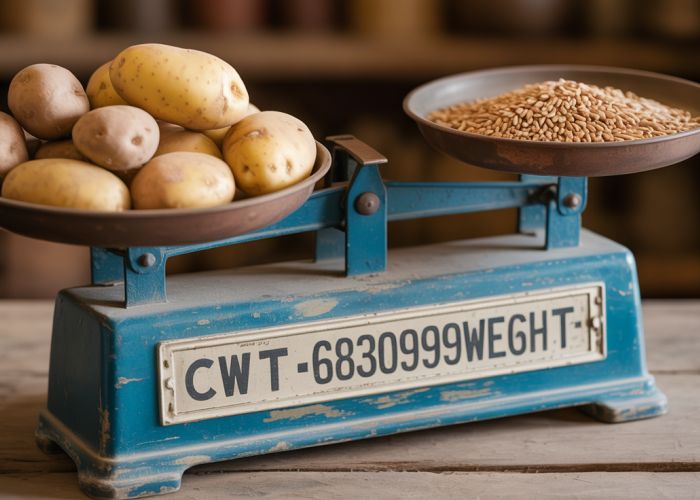The concept of weight measurement significantly influences international trade, particularly when dealing with commodities measured in cwt hundred weight. Different scales, used in agricultural markets, require precise conversion and understanding of units like cwt hundred weight to ensure fair transactions. Cwt hundred weight, commonly used in regions where the imperial system prevails, represents a specific quantity vital for pricing and logistics. Therefore, accurate comprehension of cwt hundred weight is essential for stakeholders involved in these areas.

Understanding CWT Hundred Weight: A Comprehensive Guide
This guide will provide you with a clear and concise understanding of the unit of measurement known as the hundredweight (cwt). We’ll break down its definition, origins, variations, common uses, and provide practical conversion information. Our primary focus is to illuminate the importance and context of "cwt hundred weight" in various applications.
What is a Hundredweight (cwt)?
The hundredweight (cwt) is a unit of mass that originated in England. It’s essentially a larger unit of measurement derived from the pound (lb) and historically used for weighing larger quantities of goods, particularly in agriculture and trade. The term "hundredweight" implies a weight equivalent to 100 pounds, although, as we’ll see, this can vary depending on the system of measurement used.
Different Types of Hundredweight
It’s crucial to understand that there are two main variations of the hundredweight:
-
The Imperial Hundredweight (UK): This is equal to 112 pounds (approximately 50.8 kilograms). This is the standard hundredweight used in the United Kingdom and some Commonwealth countries.
-
The US or Short Hundredweight: This is equal to 100 pounds (approximately 45.36 kilograms). This is primarily used in the United States.
Therefore, always clarify which cwt hundred weight you are dealing with to avoid confusion!
Historical Context and Origins
The hundredweight emerged from the need for a standardized unit for larger-scale trade. The history is intertwined with the development of the avoirdupois weight system. The "long hundred" (112 lb) can be traced back to medieval wool trade practices in England.
Common Uses of the Hundredweight
While not as prevalent in everyday life today, the hundredweight remains in use in specific industries:
- Agriculture: Weighing agricultural products, such as grain, potatoes, and sugar beets. Farmers might quote prices per cwt for bulk sales.
- Livestock: In some regions, the weight of livestock (particularly cattle) may be expressed in hundredweights.
- Recycling: Sometimes used in the recycling industry when dealing with large quantities of materials.
- Scrap Metal: Purchasing and selling of scrap metal can be measured in cwt.
- Commodities Trading: Certain commodity markets might still utilize cwt for quoting prices or dealing with larger volumes.
Converting Hundredweights to Other Units
Understanding how to convert cwt to other units is essential. Here’s a table summarizing the common conversions:
| Unit | Imperial Hundredweight (112 lb) | US/Short Hundredweight (100 lb) |
|---|---|---|
| Pounds (lb) | 112 | 100 |
| Kilograms (kg) | ≈ 50.80 | ≈ 45.36 |
| Stones (st) | 8 | ≈ 7.14 |
| US Tons | ≈ 0.056 | 0.05 |
| Imperial Tons | 0.05 | ≈ 0.0446 |
Examples of Conversion:
- To convert from Imperial Hundredweight to pounds: Multiply the number of cwt by 112.
- To convert from US Hundredweight to kilograms: Multiply the number of cwt by 45.36.
- To convert from pounds to US Hundredweight: Divide the number of pounds by 100.
Why It’s Important to Specify "cwt hundred weight"
The clarification "cwt hundred weight" is sometimes used to explicitly emphasize that the unit of measurement being referred to is indeed the hundredweight, particularly in contexts where ambiguity might exist. This emphasis is more common when communicating with individuals unfamiliar with the unit. Moreover, using the term "cwt hundred weight" (with both terms) helps to reinforce the correct terminology and reinforces that we are referring to the unit of hundredweight, not some other use of the letters "cwt".
FAQs About CWT Hundred Weight
Here are some frequently asked questions to help you better understand the concept of cwt hundred weight and its uses.
What exactly does "cwt hundred weight" mean?
Cwt, short for hundred weight, is a unit of mass. It’s primarily used in the United States and the United Kingdom, though less commonly now. It is defined as 100 pounds in the US (short cwt) and 112 pounds in the UK (long cwt). Understanding which type is being used is crucial.
Why is cwt hundred weight still used if it’s not a standard metric unit?
While metric units are prevalent, cwt hundred weight persists in certain industries, particularly agriculture and commodity trading, often due to historical precedent or established practices. Some businesses simply haven’t transitioned to using kilograms or other metric measurements.
How do I convert cwt hundred weight to kilograms?
The conversion depends on whether you’re using the short or long cwt. A short cwt is approximately 45.36 kilograms. A long cwt is approximately 50.80 kilograms. Always clarify which cwt hundred weight measurement is being used for accurate conversions.
Where would I most likely encounter the unit cwt hundred weight today?
You’re most likely to find cwt hundred weight used when buying or selling agricultural products such as grains, hay, and livestock. It’s also occasionally seen in shipping and freight contexts, although less common than it once was. Be mindful of local practices and confirm units for clarity.
Alright, that wraps up our deep dive into cwt hundred weight! Hopefully, you’ve got a solid grasp now. Remember to double-check those calculations and you’ll be a pro in no time. Happy trading!